The trip to Pangong Tse had been ruled out due to worsening weather conditions, so after a morning well spent at the Thiksey Monastery, we decided to go to Leh and explore the town. We had some hours to spare before leaving for the next destination and that useful things could be done in that time. So we hired a cab and set off to Leh on a very hot afternoon.
Apart from being the political and spiritual nucleus of Ladakh, the Leh of today is also the prime base for launching expeditions all over the region. Settled lower than the high mountain passes, it is also an ideal resting place to acclimatize with the unforgiving climate of Ladakh before starting on a trip. This acclimatization is very critical and any negligence can lead to Acute Mountain Sickness (AMS), which is sometimes fatal. As the saying goes – Don’t be a Gama, in the land of Lama.
The main places of interest inside the Leh town are: the main market, ruins of the ancient fort, Leh Palace, Stok Palace and the Shanti Stupa (Peace Pagoda). Of these, we were able to see the Leh Palace and Peace Pagoda with the limited time available to us.
The erstwhile capital of the Kingdom of Ladakh, Leh is now a district town in Jammu & Kashmir and also serves as the base of Ladakh Autonomous Hill Development Council. This ancient town has been known since at least 1st century AD and back in the time of Kushanas, it had already established itself as an important convergence point of the Indus Valley Trade routes of Central Asia, India and China. The first important kingdom was established by Nyima gon, grandson of a Tibetan King, in 10th Century AD. In the 17th Century, the town resisted an Tartar invasion and was able to hold them off with the help of Mughals, an event which is best represented in the form of a mosque below the Leh Palace, one that still stands today. Europeans started reaching Leh in the later centuries, with Portuguese being the pioneers and the first Britishers arriving as late as 1820 (William Moorcroft).
Leh Palace
Modelled over the Potala Palace in Lhasa, the 9 storied Leh Palace was the residence of the royal family of Ladakh since the 1700s till it was abandoned in the favour of the Stok Palace in the 19th century. The palace was in a dilapidated state at the time of independence and has since been restored by the ASI. It houses a museum and photo gallery. The architecture is Tibetan and while it is not richly decorated like the palaces of Rajasthan, it is quite impressive nonetheless. It provides a stunning view of the Leh town and surrounding areas. We spent about an hour here exploring the rooms and galleries of the palace. There was a photo exhibition going on, on Rupert Wilmot’s travels to Ladakh in 1930s.
Claude Rupert Trench Wilmot (1897-1962) was an officer in the British Army who served in India for 15 years. In 1931 and again in 1934, he made two trips to Ladkah, once from Srinagar via the route we had taken and another from the Kullu valley, and documented the life in Ladakh with his camera in a manner that is intensely personal, presenting the people he encountered in their natural habitat. The images record a way of life that has all but disappeared from Ladakh.
Of all the photographs that he took, only 300 could survive and that too were lost for decades before being found out by his family. Realizing the importance of these photographs for the people of Ladakh, his family donated the entire collection to a trust in Leh. The collection has also been made into a book named – “The Lost World of Ladakh-Early Photographic Journeys in Indian Himalaya 1931-1934.” Fortunately we managed to purchase a copy in the market and carried home this visual treasure with us.
Shanti Stupa
This was the third Shanti Stupa (after Rajgir and Vaishali) that we visited. Built on a hilltop with Japanese collaboration, the Stupa contains relics of Gautam Buddha is meant to promote the message of world peace and harmony. In structure, it is the same as the other Shanti Stupas – a two level structure with a parikrama path on the first level and the relief of Buddha on the second level. The monument provides an excellent view of the Leh town and surrounding countryside and its dazzling white structure can be noticed from anywhere.
Leh Market
It is difficult to estimate exactly how old the main market of Leh is. While there are narrow lanes within antiquated shops selling peddling merchandise galore give it the charm of a bygone era, there is no dearth of ugly concrete boxes. Bereft of any character, these new structures try to pass on as modern and end up earning Leh, the nickname of ‘Paharganj of Ladakh’. The influence of Tibetan Buddhism is apparent everywhere and countless shops sell Tibetan souvniers like Maane and Khor. There is a little shop which calls itself ‘Bookworm’, owned by an elderly Sikh gentleman from where we bought a few books.
There was a slight drizzle while we were taking a walk in the market and that gave some relief from the scorching sun of the late morning. We were famished after the walks up and down all afternoon and asked our cab driver where good local cuisine could be found. He suggested a restaurant named Amdo which is located in the main market at a small distance from the parking lot. So it was there that we went first. This little place owned by seemingly owned by a Tibetan is quite simplistic in ambience, with just a few plastic tables and chairs in a plain looking room; and serves amazing food. None of the waiters know English or Hindi, so the guests have to write down their order on a piece of paper, which is then taken to the lady at the counter who deciphers it to the kitchen staff. We ordered the famed Thukpa and some other Ladakhi dishes and were bowled over by its fulfilling taste.
There was another interesting thing about the restaurant; the walls of the dining room were replete with posters of Free Tibet and Chinese atrocities in Tibet. There was a group of Chinese tourists sitting in the restaurant and they must have been feeling a little hot under their collars!
As we got stranded for a couple of days due to more cloudbursts, we kept coming back to Leh market for shopping or just to pass time. There are some very good restaurants in Leh, Chopsticks became one of our other favourites. There is much more to see there and elsewhere in Ladakh, that we will need a few more trips to be satisfied of our knowledge of this beautiful place. So more about Leh from the next trip maybe ..

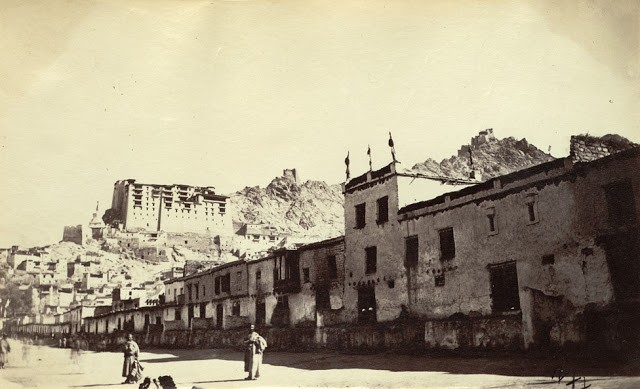
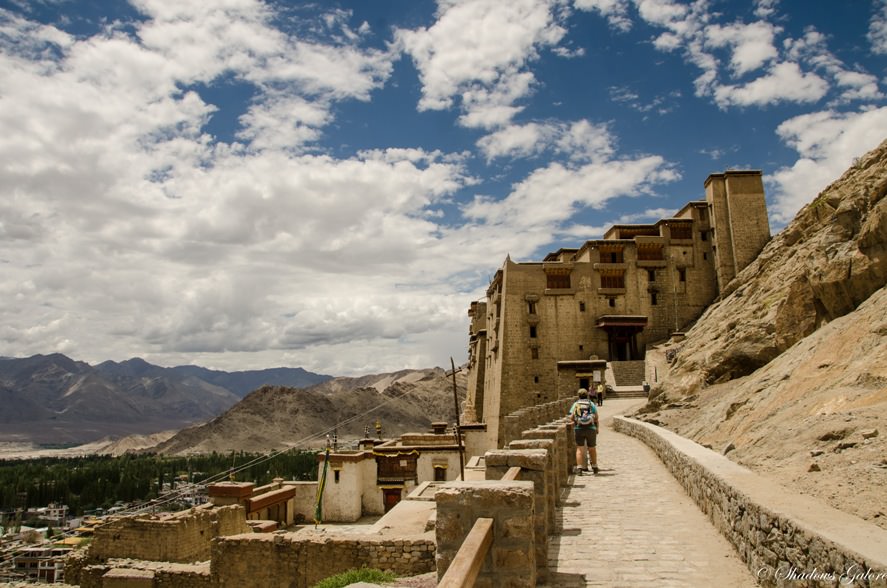
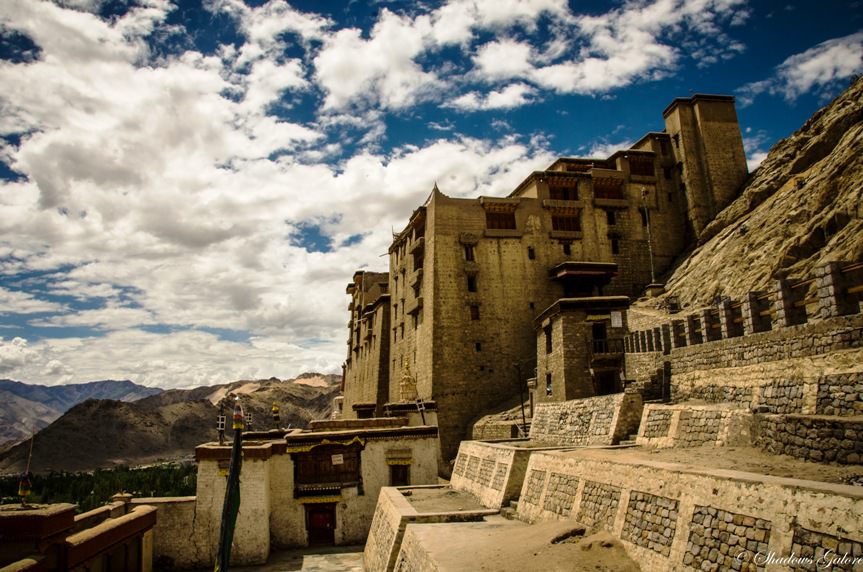
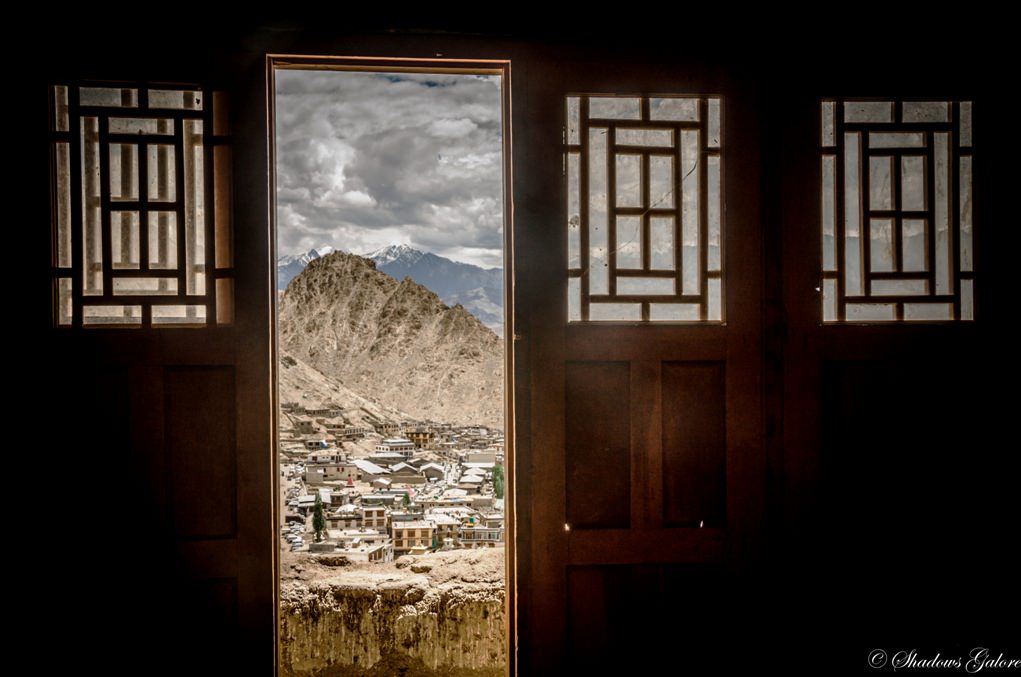
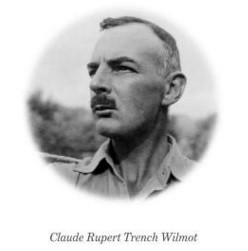
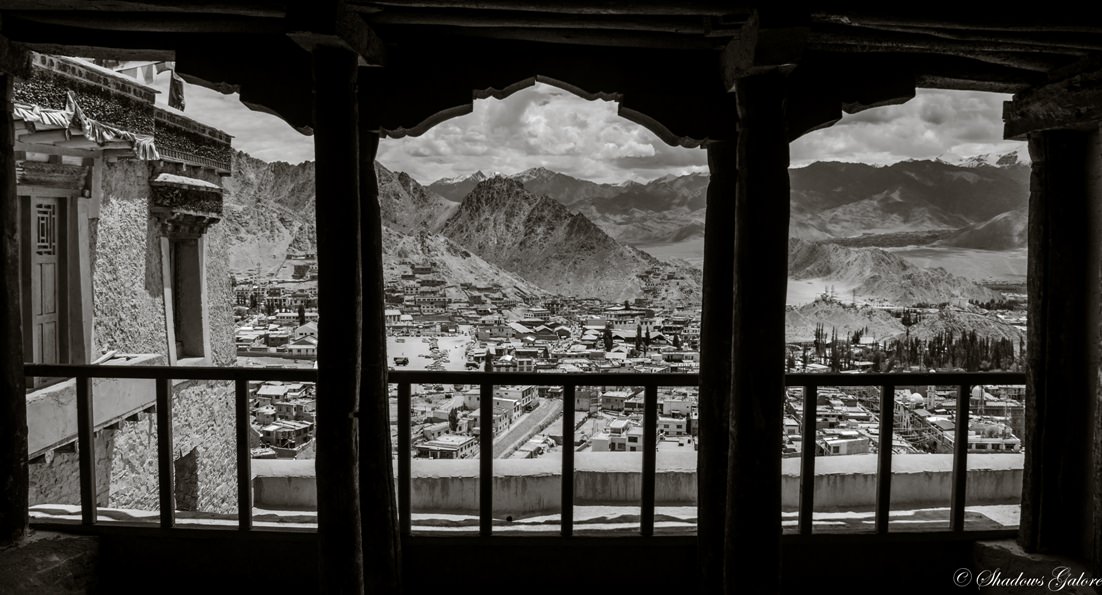
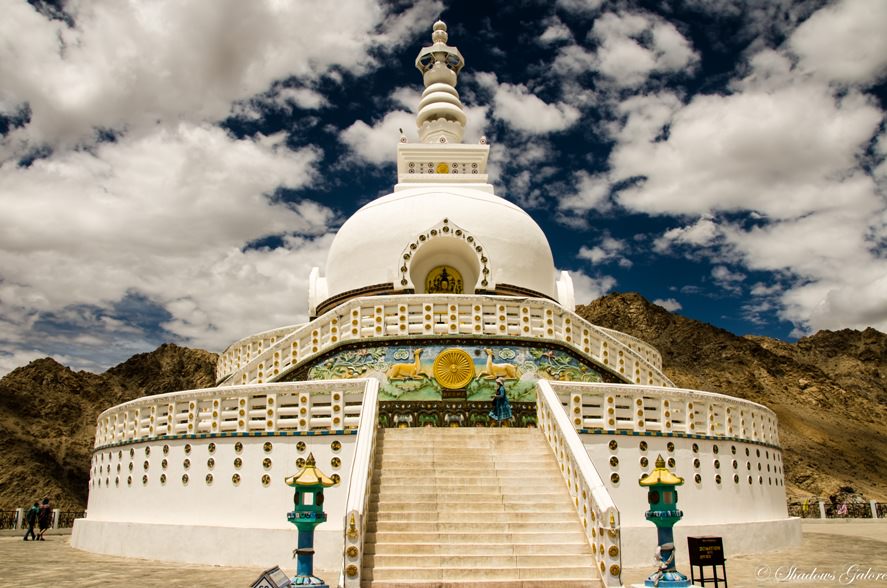
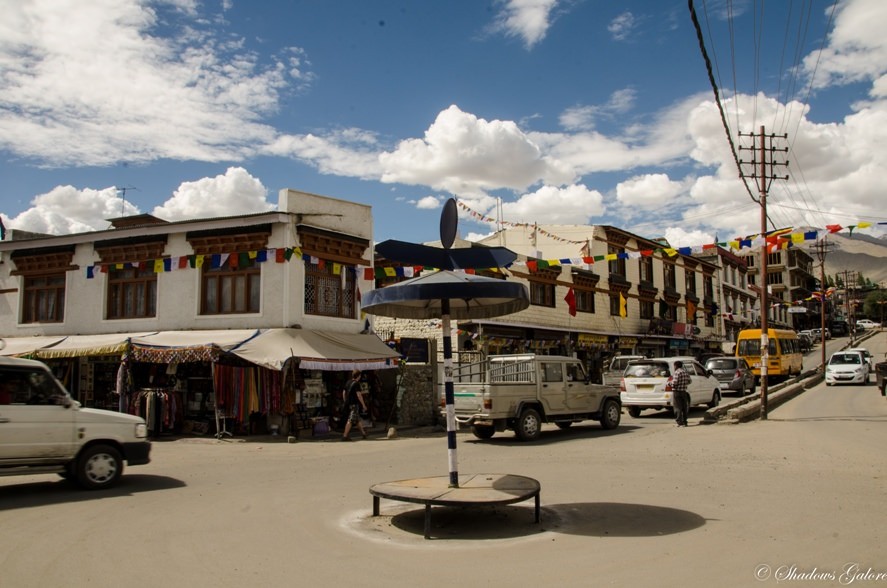
Beautiful pictures, we visited Leh in Jan
gorgeous place
Wow ! It must have been very cold in January !
Ah! I’m glad you made it to Leh. It has been on my wish-list for so long…I had to cancel my trip last October due to some personal reasons. But I’m going to make it there in 2016 for sure.
Yes Renuka, it was on our bucketlist for a very long time and I wish we go back to Ladakh very soon. When you go, please avoid the monsoons. It has become very unpredictable due to climate change..
beautifully written with amazing pictures……..will definitely try Chopsticks and Amdo based on your experience.
Thanks Arya.. and do some shopping as well 🙂
Stunning pictures! We visited Leh In August and luckily we didn’t have any bad weather.
Thanks Chaitali. I would say you got lucky. We spent a lot of time playing hide and seek with cloudbursts, landslides and floodings 😀
wow! Amazing Photography. No doubt Leh is beautiful place.
Thanks Mastana. Welcome to Shadows Galore 🙂
Leh is mesmerizing, each time I see its pics in different blogs I have this strong desire to visit it once.
Hopefully some day. I would love to pick up that books with old pics myself.
Thanks Indrani 🙂 You can get the from Amazon : http://www.amazon.in/Lost-World-Ladakh-Photographic-Journeys/dp/8190900420/ref=sr_1_1?ie=UTF8&qid=1459404525&sr=8-1&keywords=the+lost+world+of+ladakh
That’s an amazing place bestowed with natures serenity and grace. Your write up and image explores and justifies its charm.
Thanks Chaitali 🙂
hahaha – Don’t be a Gama in the land of Lama?
Exactly! That’s a good one. 🙂
Puru, Thank you, Thank you, Thank you.
Thank you for the trip through your truly awesome pictures and your travel account.
Haha, yes we actually saw that on a signboard there .. and thinking about it, it is quite true. When it is difficult to take even five steps briskly, any kind of bravado may cause problems and worse.
Thanks for your kind words and constant support. We look forward to you comments actually ! 🙂
Amazing photographs.
Beautiful captures Puru. We missed going to Leh palace because of AMS, but will surely go there in our next trip to Leh
A belated thank you. We can surely make multiple trips to Ladakh 🙂
Great captures 🙂
Thank you Krishnandu 🙂